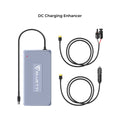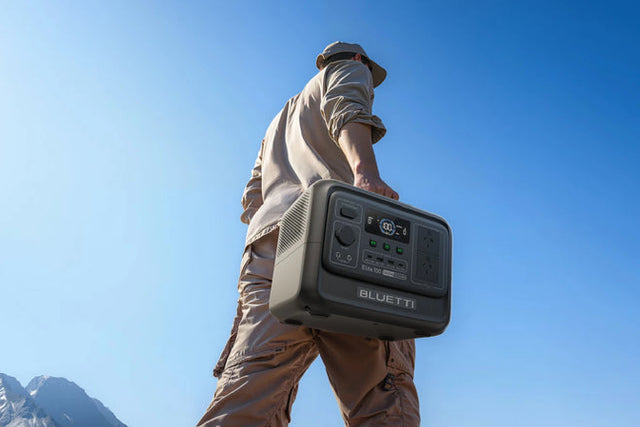MPPT Solar charge controller is invaluable equipment for efficient solar power use. Sustainable energy, such as solar power, has gained popularity in recent years.
To optimize and ensure the efficiency of solar power as an energy source, you must have a solar charge controller. The solar charge controller protects and maximizes the efficiency and lifespan of the solar panels by controlling the amount of electricity flowing from the panels to the batteries.
This article will discuss various aspects, applications, and benefits of MPPT (Maximum Power Point Tracking) solar charge controllers.
What is an MPPT Solar Charge Controller?
MPPT solar charge controller is an electronic DC-to-DC converter. The controller receives and regulates the voltage from the solar panels and allows it to charge your batteries.
It ensures the loads receive maximum current to be used by fast charging the battery. The complete PowerPoint is the ideal voltage for optimum power delivered to loads with lesser losses. In simpler terms, it converts the high-voltage DC output tapped by solar panels to the favorable voltage required for charging the batteries.
Related article: Why is LiFePO4 Battery the Ideal Choice?
How Do MPPT Solar Charge Controllers Work?

The working principle of the MPPT solar charge controller is easy to understand. It works in two ways:
- By increasing the solar panel's output voltage
- By discharging the battery or by decreasing the battery's voltage
Throughout the day, a varying amount of sunlight falls on the solar panels. Therefore, the voltage of the panels and current vary.
To generate the optimum power, the MPPT solar charge controller regulates the panel voltage and perfectly balances the current and voltage for optimum power.
The MPPT tracks and adjusts PV voltage continuously to generate the maximum power, regardless of the time of day or the sun intensity. The MPPT technology ensures increased operating efficiency. With MPPT, the energy generated is 30% more than a PWM charge controller.
The Difference Between MPPT and PWM Solar Charge Controllers
There are two major solar charge controllers: the MPPT (Maximum Power Point Tracking controllers) and PWM (Pulse Width Modulation controllers). Here are the differences between the two.
The MPPT solar charge controllers are considered the "smart DC-DC converter" because they utilize the latest technology. It regulates the panel voltage to the required voltage suitable for charging the battery—the current increases with the same ratio as the voltage drops.
The intelligent feature in the MPPT DC-DC converter monitors the panel's maximum power point, which varies at different times of the day or depending on the weather conditions.
The PWM solar charge controller is considered an electronic switch between the battery and solar panels. PWM controllers are smaller and operate on battery voltage, unlike MPPT controllers, which use the maximum power voltage.
Why choose MPPT over the PWM solar charge controller? As mentioned above, the MPPT controllers utilize the latest technology for increased and efficient energy harvest, have lesser module restrictions, and can support oversized arrays.
Features and Benefits of MPPT Solar Charge Controllers
There are several things to consider when buying an MPPT solar charge controller for your solar system. Here are a few factors to consider when choosing the right MPPT for your solar system.
High Conversion Efficiency
The MPPT solar charge controllers utilize unique technology to maximize solar panels' efficiency by dynamically regulating the operating point and extracting the maximum available power.
The high conversion of MPPT allows for highly efficient use of available solar power, which results in improved charge rates and shorter charging periods. Additionally, it maximizes the solar panel's power output during lesser favorable weather conditions, such as during low temperatures or low light variations.
Multiple Charging Stages
The MPPT solar charge controllers utilize multiple charging stages such as float, bulk and absorption.
The various charging stages optimize the charging process for the battery by ensuring safe and efficient charging.
The bulk stage ensures quick charging of the batteries with high current up to a certain voltage level. The absorption stage maintains a constant voltage for the complete charging process. The float stage maintains the fully charged state of batteries without overcharging them to ensure a prolonged lifespan.
Advanced Tracking Algorithms
The MPPT charge controllers have innovative or advanced tracking algorithms to monitor and regulate the operating point in solar panels constantly.
The advanced tracking algorithms allow the charge controller to accurately track the solar panel's maximum power point (MPP), even in different weather conditions. As a result, there is maximum power extraction and improved system performance.
Additionally, the algorithms automatically adjust the charge controller's output and match it with the changing conditions to ensure optimum power conversions and efficient charging. The MPPT charge controllers can quickly adapt to changes in sunlight variation, shading, and temperature, thus maximizing the solar energy harvested by your system.
How to Choose the Best MPPT Solar Charge Controller?

System Size and Voltage Compatibility
It would help if you first determined the solar panels' total wattage by multiplying each panel's wattage output by the number of panels. This will enable you to select the right MPPT with the suitable capacity accurately.
Additionally, consider the voltage compatibility of the solar panels and the charge controller. The charge controller must be capable of handling the input voltage of the solar array. Also, ensure the input voltage range of the controller matches or exceeds the Voc of the solar panels. This prevents overloading and ensures optimal performance.
Solar Panel Configuration
Check the number of your solar panels and their configuration, whether in series, parallel, or a combination of both. Then, calculate the solar panel array's total voltage and current output based on the configuration. This information enables you to choose the suitable charge controller based on the type of solar panel configuration.
Additionally, check the maximum input current and the voltage specifications of the MPPT charge controller to ensure compatibility with the solar panel configuration.
Battery Type and Capacity
First, understand the type of battery you are using, whether it's lead-acid, lithium-ion, or LiFePO4. Different types of batteries have varying charging requirements. Also, consider the battery's nominal voltage, usually 12V, 24V, or 48V, and the battery bank capacity, measured in Ah or Wh. The charge controller must be capable of delivering sufficient charging current to recharge the batteries effectively.
Additionally, check the charging parameters recommended based on the battery type, such as the absorption voltage, the float voltage, and the temperature compensation. The MPPT solar charge you choose must be able to provide appropriate charging profiles and voltage settings for safe and efficient battery charging.
MPPT Solar Charge Controller: Installation, Setup, and Troubleshooting
The installation, setup and troubleshooting of the solar charge controller are crucial to ensure the solar system's optimum, efficient and reliable operation. Before initiating any process, read the manufacturer's manual for guidance. The following will guide you through the installation, setup and troubleshooting processes.
1. Installation: Guidelines
- First, identify a suitable location. It must be dry, well-ventilated and shielded from direct sunlight or extreme temperatures.
- Mounting- Mount the charge controller securely on the wall or a sturdy surface using the provided screws and brackets. The installation must be easily accessible for future maintenance.
- Wiring- Connect the solar panels to the charge controller solar input terminals. Remember to observe the polarity accurately. Next, attach the battery to the charge controller's battery terminals, ensuring correct polarity is used. Use the appropriate wire sizes and fuses according to the manufacturer's recommendation.
Solar Generator Kits with MPPT Solar Charge Controller
1. BLUETTI AC200MAX Power Station

The BLUETTI AC200MAX power station is an impressive portable power station with excellent power output. You will no longer struggle with the loss of power, and it gives your freedom and flexibility. The portability enables you to use the power station for outdoor activities such as camping, hiking, boating, etc.
High capacity allows you to power nearly all your appliances and devices. The power station has standard AC outlets, built-in wireless charging pads, a 30A RV plug and 12V DC outlets.
Features
- Management System: MPPT Controller
- Intelligent control and monitoring using BLUETTI App
- 7 Ways to Recharge (AC/Solar/Car/Generator/Lead Battery/Dual AC/AC+Solar)
- A high capacity 2048Wh LiFeP04 battery with a life cycle of 3500+ up to 80%.
- A 500W adapter input and 900W solar input rate, 1400W in total.
2. BLUETTI AC300 Solar Power Station

The BLUETTI AC300 is a high-performance, versatile, and reliable portable power station with a minimalist design and features. It has an output capacity of 3000W with 6x 220V-240V/13A outlets, 2 12V DC outlets, 4 USB A ports, 2 supporting 18W, and a 100W USB-C PD port. Other impressive features include an impressive capacity, intuitive app control, and a fast-chargeable battery.
Features
- MPPT solar charging- It supports up to 2400W solar panels with a range of 12 to 150V, sufficient for recharging all batteries with good sunlight.
- Scalable and 12,288Wh high capacity for longer run time.
- Safe and durable LFP(LiFePO4) battery with 3,500 cycles + Life Cycles up to 80%
- Compatible with most solar systems. It uses MC4 connectors for solar charging.
- It features an LCD touchscreen and a mobile APP control for easy monitoring, setup and control.
- Accepts multiple charging options using the wall outlet, car, solar panel, generator, and lead-acid battery.
3. BLUETTI EP500 Pro Solar Power Station

The BLUETTI EP500 Pro Solar Power Station is a superior, most powerful and highly versatile power station in the market. The power station is equipped with an advanced technology groundbreaking LiFePO4 battery. It has a capacity of 5100Wh, enough for powering appliances and devices with a maximum power of 3000W / 6000W peak load. The storm has over 6,000 charge cycles up to 80% capacity with a 1200W MPPT Solar Charging.
The BLUETTI EP500 Pro has an integrated UPS system. It ensures your power station is continuously supplied with power in case of power loss.
The BLUETTI EP500 Pro charges quickly, approximately 2-2.5 hours. It has a maximum input of 2400 W, and you can charge it with solar panels for 3 to 4 hours. You can charge simultaneously for 1.5 hours with maximum information of 4000W.
Features
- 1200W MPPT Solar Charging
- Large battery capacity of 5100Wh lithium-iron (LiFePO4) battery cell
- 3,500+ Battery Cycles up to 80% Capacity
- Wide range of output ports, including Wireless Qi, USB-A, USB-C PD (100W), 12V - 10A & 12V - 30A up to 230 volts AC, 12V - 30A for motorhome or caravan use.
- A 4,800W surge inverter and 2,000W pure sine wave inverter capable of powering your entire house in case of a power outage
- Easy control with touchscreen features and mobile APP control
2. Setup: Solar Charge Controller Configuration
- Read the manual carefully by reviewing the manufacturer's instructions for specific instructions on installation in relation to your MPPT charge controller model.
- Battery Settings- Configure and match the charge controller with the battery types, for instance, lead-acid, lithium-ion and voltage (12V, 24V, 48V). You can do this through DIP switches or software settings.
- Load settings- If the charge controller supports load output, adjust the load settings as needed. You can specify the parameters such as load control modes, load reconnect voltages, and load disconnect voltages.
- Communication- If the charge controller supports interfaces such as RS485, USB, or Bluetooth, set them up. The communication interfaces allow easy monitoring and control using external software or devices like smartphones.
3. Troubleshooting Common Issues: Solar Charge Controller
- Wiring- Ensure all the wiring connections are properly tightened and secure. Loose wire connections may cause voltage drops or performance decline.
- Current and Voltage- Monitor the Solar Input using a multimeter or charge controller display to check if the solar panels are generating the required current and voltage. Check the wiring and the panels for any faults or damages.
- Check the Battery Status- Check the battery voltage and the charging or discharging status. If the voltage is continuously too low or too high, it means there's an issue with the battery or the charge controller.
- The Error Codes and Indicators- check the charge controller manual for any indicator and code errors. Use the manual to troubleshoot the error.
- Overheating- Ensure proper and sufficient ventilation and cooling if the charge controller is excessively hot. Overheating reduces the efficiency and lifespan of the charge controller.
- Firmware Update- Check for any firmware updates available for the model of your charge controller. If necessary, update the firmware to address the bugs and optimize the performance of the charge controller.
Final Thoughts
In conclusion, MPPT solar charge controllers offer several benefits compared to PWM solar charge controllers. The MPPT solar charge controllers can optimize power output from your solar panels by constantly tracking and adjusting to the maximum power point.
It leads to a substantial increase in energy conversion efficiency and enables the users to harness more power from solar arrays, thus maximizing their returns on investment. Notably, MPPT solar charge controllers come in different sizes and power ratings designed for various system requirements. Consider factors such as the battery voltage compatibility, the panel voltage and current ratings, the load capacity, and the specific solar power needs when choosing an MPPT solar charge controller.
Shop products from this article
Be the First to Know
You May Also Like

Let’s discover what you understand by a 12V fridge, its merits, its demerits, and whether it suits you or not. Also discover BLUETTI 3-in-1 Fridge Freezer.

Here’s how to clean solar panels on roof the right way. Learn about DIY options, costs, and what to avoid to get the most out of your investment in solar.

Looking for a reliable power pack for camping, travel or phone charging? Discover the best lithium power packs for all your needs, including BLUETTI’s EB3A, AC2A and AC50B.












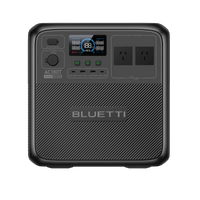












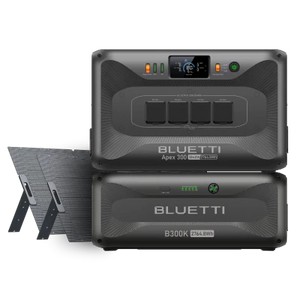





















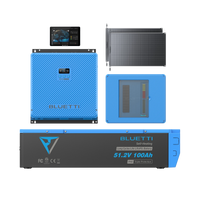





















![[Phased Out] BLUETTI B80P Expansion Battery | 806Wh](http://www.bluettipower.com.au/cdn/shop/files/202310025B80P_2000-2000px_4_4caa0c1c-4dab-4272-9e9b-2b7507e5bd81.jpg?v=1713777870&width=200)
![[Phased Out] BLUETTI B210P Expansion Battery | 2,150Wh](http://www.bluettipower.com.au/cdn/shop/files/2_08cf9ef3-03a4-4489-b641-d3edb8094896.webp?v=1716016566&width=200)
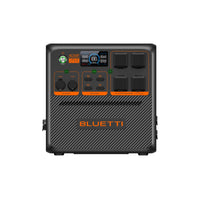


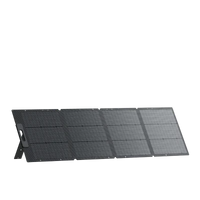


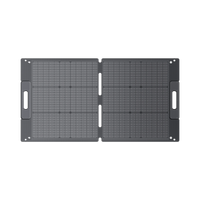





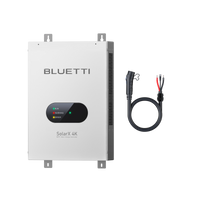






















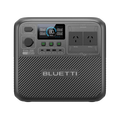

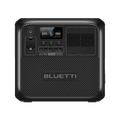






























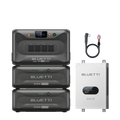



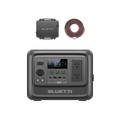





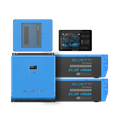














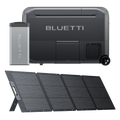




















![[Phased Out] BLUETTI B80P Expansion Battery | 806Wh](http://www.bluettipower.com.au/cdn/shop/files/202310025B80P_2000-2000px_4_4caa0c1c-4dab-4272-9e9b-2b7507e5bd81.jpg?v=1713777870&width=120)
![[Phased Out] BLUETTI B210P Expansion Battery | 2,150Wh](http://www.bluettipower.com.au/cdn/shop/files/2_08cf9ef3-03a4-4489-b641-d3edb8094896.webp?v=1716016566&width=120)


















